London, controversy over restoration of Piero della Francesca's Nativity: ruined
There is controversy in England over the restoration of Piero della Francesca ’s Nativity at the National Gallery in London, which was recently restored and will be back on public display in a special exhibition from Dec. 1, 2022. Challenging the results is Guardian critic Jonathan Jones, who did not like the way the London museum’s restorers restored the gaps in the great Tuscan artist’s painting.
The work arrived in London in the 1860s, already in poor condition, with obvious splits in the altarpiece, and large color falls caused by excessive cleaning, evident especially in the area of the shepherds. When the Gallery acquired this painting in 1874, a question was raised in Parliament about how much of the original paint surface had survived. And it is precisely on these gaps that the restoration intervened.
The intervention, led by senior gallery restorer Jill Dunkerton and carried out by Britta New, is indeed noticeable. The abrasions were restored by “subtly veiling the lines of Piero’s precise underlying drawing,” the museum explains. “This sets the figures back as they should, allowing us to appreciate the artist again.” The restoration also provided an opportunity to interpret the painting as a work initially intended for private devotion.
“Spending the last three years with this much-loved painting has been a real privilege but also a great responsibility,” Dunkerton said. “Every decision, every tiny brushstroke of retouching, affects our perception of its appearance and meaning, perhaps for many generations. I hope visitors can now experience its quiet magic without the distraction of past damage.”
National Gallery Director Gabriele Finaldi says, "Piero’s Nativity is a beautiful and profound meditation on the story of Christmas. The recent conservation project allowed us to see how carefully planned each element of the image is, from the play of light on the surfaces to the rendering of the distant hills of Sansepolcro. More than five centuries after Piero’s lifetime, we can still admire his artistic vision, skill and sheer inventiveness."
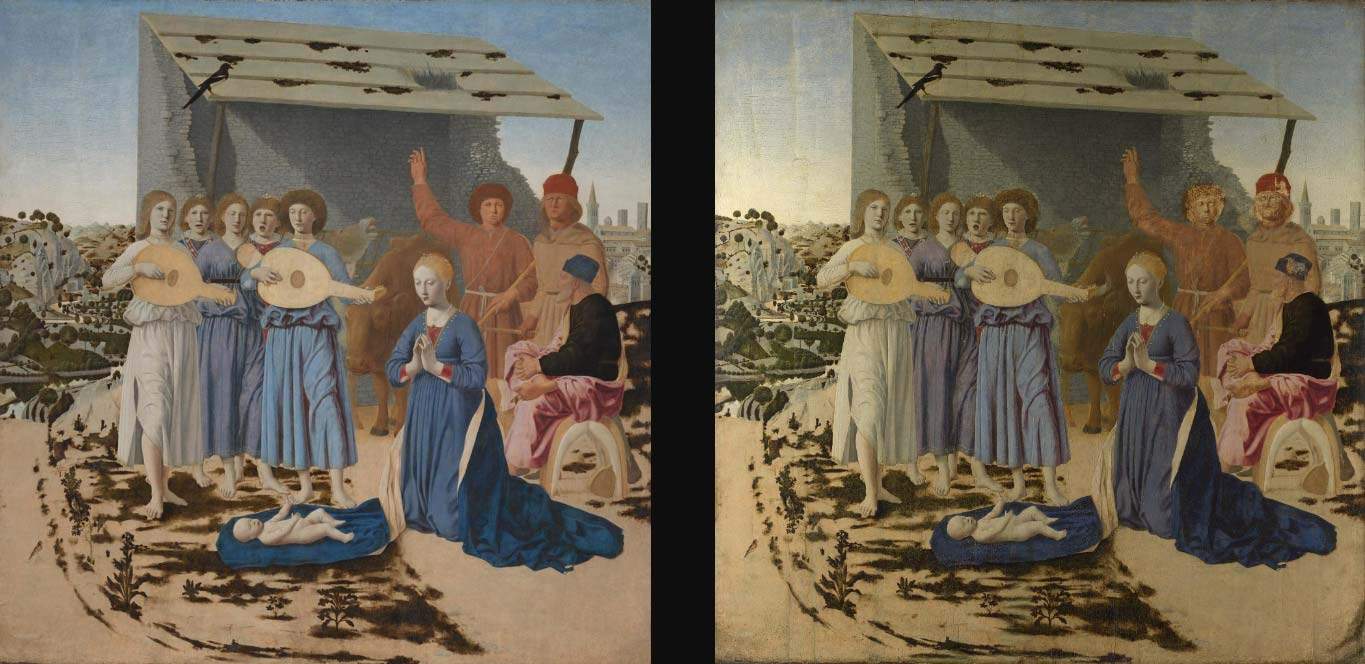 The
The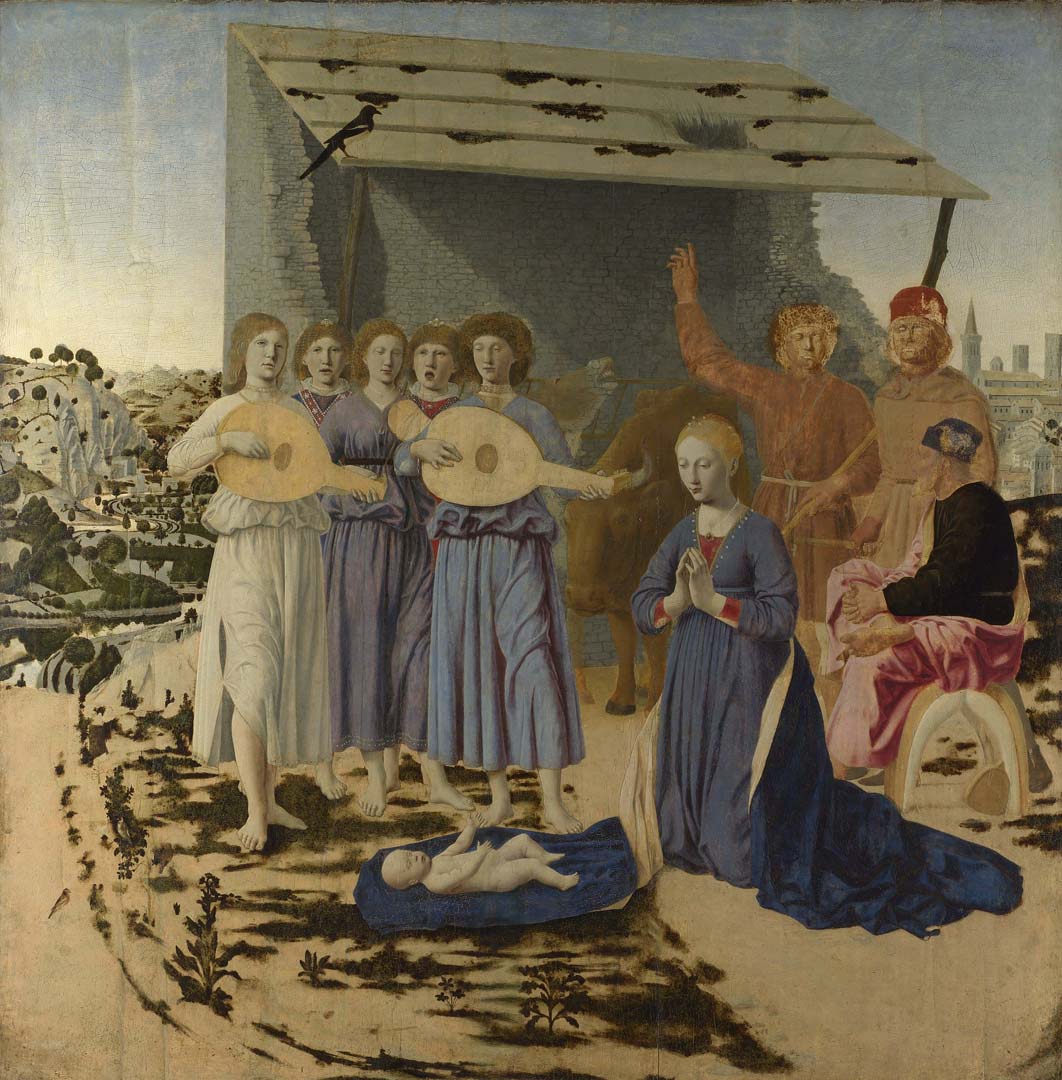 The
The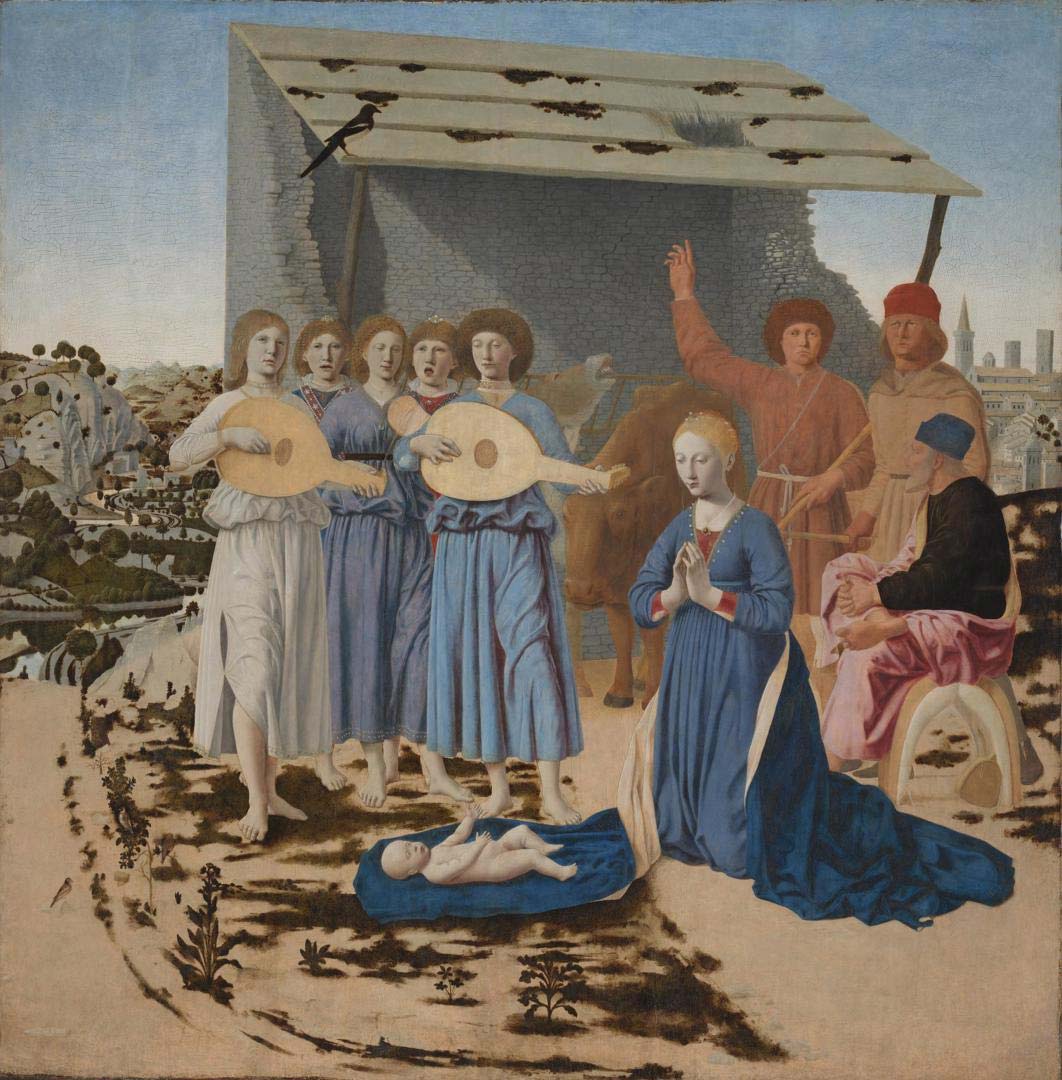 The
The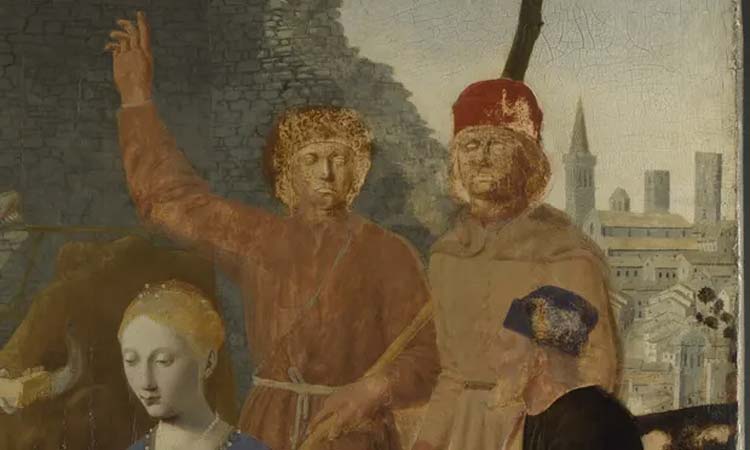
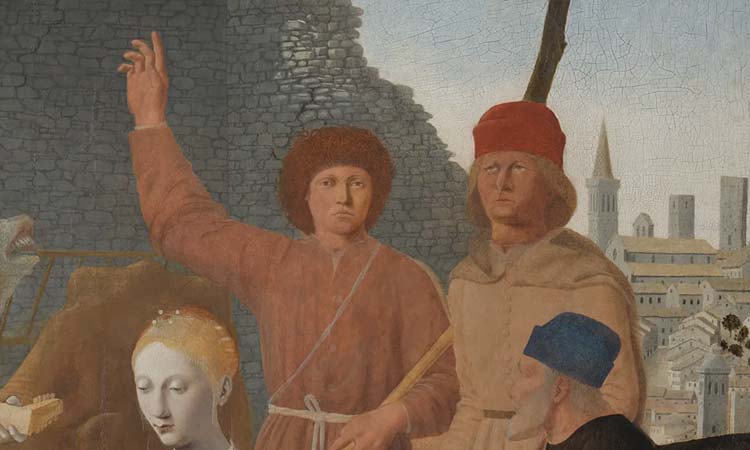 Detail of the shepherds
Detail of the shepherdsNot of the same opinion is Jonathan Jones, who has long covered art for the Guardian. “The National Gallery has ruined Christmas,” his article begins. "Or, to be more precise, it has had a very good go at destroying one of the world’s greatest Nativity paintings. [...] What in God’s name inspired the restorers to paint two completely new and distractingly stupid shepherds’ faces? Or a large white stain on the wall of the stable?"
“His pallor was part of his ethereal beauty,” Jones writes. "Now, the eye is drawn to the face of a ruddy shepherd painted by the restorer covering a part of the painting long since obliterated. It is so terrible that it makes me think of the infamous amateur repainting of Christ’s features in a Spanish fresco that caused global hilarity a decade ago. The face of this red-hatted shepherd is, fortunately, more competently done than the Christ-Ape and is based on scientific studies. Yet soulless artistic competence has produced an idiotic mess. This orange-faced man looks vacuous and bloodless, even constipated, his eyes barely human blurred and lifeless. It is as if he is trying to remember where he parked his donkey. The rest of the face is also awkward, with coarse shadows trying to define the nose and cheeks. It is like a pastiche of Renaissance art from a very cheap and bad app. The adjacent curly-haired pastor pointing to the sky is no better. He looks like a teenager dancing for attention at the school disco."
“I don’t believe for a second,” the critic continues, “that this restoration is faithful to the original. There is simply no image more moving than a company of singers, united in their song. Or a more human Madonna. Compare their expressions with the rudimentary ones added to the shepherd and you immediately understand the problem.”
The intervention was also prompted by research into the painting’s meaning: indeed, the National Gallery now believes it is an illustration of a vision St. Bridget of Sweden had during a pilgrimage to Bethlehem. But this however according to Jones does not justify such heavy intervention on the painting. Not least because we don’t know if the painting remained unfinished: according to the National Gallery, Piero della Francesca would have brought it to completion, and so, according to the Guardian critic, the museum felt justified in “making the painting more polished and complete, intensifying the blue of the Virgin’s robes, the gray of the stone stable, the smoothness of its roof. Even the angels seem more solid, but in a deceptive way that, in the reinforced robes and feet, borders on Pre-Raphaelite tackiness.”
"This touching and ruined Nativity, demolished like the stable in Bethlehem,“ Jones concludes, ”has now been cleaned up as if for sale by Frieze Masters. The National Gallery has no intention of selling its Nativity but perhaps patronizingly believes that visitors will respond better to a smooth, finished-looking work. I disagree and this is not what I want for Christmas."
 |
| London, controversy over restoration of Piero della Francesca's Nativity: ruined |
Warning: the translation into English of the original Italian article was created using automatic tools. We undertake to review all articles, but we do not guarantee the total absence of inaccuracies in the translation due to the program. You can find the original by clicking on the ITA button. If you find any mistake,please contact us.





























